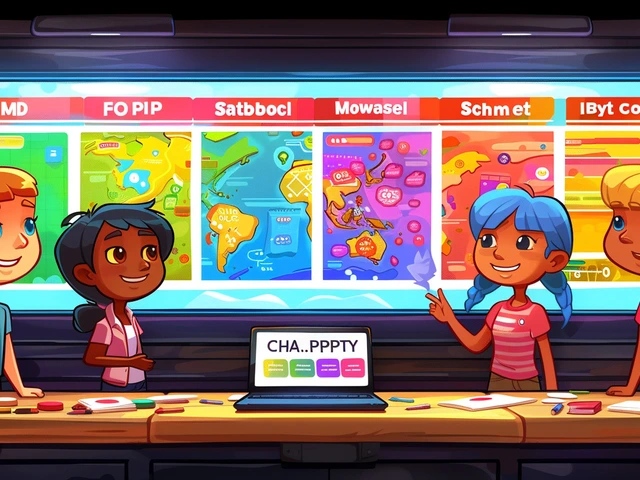In the digital age, gaming has grown into a cultural juggernaut, connecting millions of players across the globe. With this surge in popularity, in-game advertising has emerged as an innovative way for brands to interact with a highly engaged audience. Unlike traditional ads, in-game ads blend seamlessly into the player’s experience, often enhancing rather than interrupting the gameplay.
Brands are now integrating their messages directly into game environments, whether through virtual billboards, branded characters, or storyline integration. These immersive ads create authentic connections with players, making advertising feel less intrusive and more like part of the narrative.
As the technology behind video games continues to advance, the potential for creative and impactful in-game advertising will only grow. Marketers who understand this can ride the wave of gaming’s growth, reaching audiences in ways that were once unimaginable.
- The Rise of Gaming as a Dominant Platform
- Types of In-Game Ads
- Advantages of In-Game Advertising
- Challenges and Considerations
- Successful Case Studies
- The Future of In-Game Ads
The Rise of Gaming as a Dominant Platform
In recent years, the gaming industry has exploded, becoming a central component of global entertainment. With advancements in technology, games have become more immersive and visually stunning, attracting an audience that spans generations. Today, there are more than 3 billion gamers worldwide, an indicator of how mainstream gaming has become. This surge in gamers is not limited to any particular demographic, either. People of all ages, genders, and backgrounds are picking up controllers or diving deep into massive online worlds.
The rise of mobile gaming has also played a critical role in this expansion. Smartphones have put engaging, high-quality games into the hands of billions, making gaming accessible to virtually everyone. Titles like “Candy Crush” and “Fortnite” have captivated millions, breaking records and changing the landscape of entertainment. Additionally, online multiplayer games and eSports have turned gaming into a communal and often competitive activity, further expanding its reach and impact.
The revenue generated by the gaming industry is equally impressive, surpassing both the movie and music industries combined. In 2023, global gaming revenue was estimated at over $175 billion, showcasing its dominance in the market. This financial success has attracted significant attention from brands and investors, as they realize the potential of integrating their products into these virtual spaces. According to a 2023 report by Newzoo, gamers spend an average of nearly 8 hours a week playing games, providing ample opportunity for advertising to resonate with audiences.
The pandemic also served as a catalyst for the acceleration of gaming’s growth. With people spending more time at home, many turned to video games for entertainment, social interaction, and even stress relief. Platforms like Twitch saw unprecedented growth, with viewers watching billions of hours of live-streamed content annually. This has painted a clear picture for marketers: gaming is no longer a niche hobby; it’s a dominant, dynamic platform brimming with possibilities.
“The gaming landscape will continue to evolve, with virtual and augmented reality pushing the boundaries of what's possible,” says Michael Pachter, a renowned video game industry analyst. “Brands that leverage this space effectively will engage with some of the most dedicated and passionate audiences out there.”
The evolution of gaming technology adds another layer of excitement and opportunity. With developments in virtual reality (VR) and augmented reality (AR), the lines between real and virtual worlds are blurring. These advancements provide endless creative possibilities for in-game advertising, allowing brands to create incredibly immersive and interactive ads that can engage players in entirely new ways. For example, a player in a VR game might enter a virtual store that mirrors a real-world shopping experience, seamlessly blending marketing and gameplay.
The rise of gaming as a dominant platform represents not just a shift in entertainment, but a fundamental change in how people interact with digital content. Brands recognizing and adapting to this trend have the unique opportunity to connect with diverse, engaged, and growing audiences in ways traditional media simply can’t match.
Types of In-Game Ads
In-game ads come in various forms, each designed to offer a unique way for brands to connect with their target audience. One of the most common types is the virtual billboard. Similar to real-world billboards, these ads are strategically placed within the game environment where players are likely to notice them. They can appear on buildings, along racetracks, or even in stadiums within the game. This type of ad mimics traditional outdoor advertising but brings it into the digital realm where it can be updated in real-time.
Another popular form is branded characters. These are characters that players can interact with during the game. They often wear branded clothing or use branded items, making the advertising feel more integrated into the game world. This not only increases brand visibility but also helps create a more immersive experience for the player. For example, a sports game may include athletes wearing specific branded gear, subtly promoting the brand as players engage with the game.
Product Placement
Product placement is another effective in-game advertising method. Much like its use in films and television, this involves incorporating branded products into the game. Think of a racing game where players can choose real-world car brands to drive, or a cooking game featuring branded kitchen appliances. These placements can enhance the realism of the game while promoting the products in a contextually relevant way. Players appreciate the added authenticity, and brands reach their audience in an engaging manner. This form of advertising blurs the lines between gameplay and marketing, making ads feel like a natural part of the experience.Interactive ads are also gaining popularity. These are ads that require some level of interaction from the player, such as mini-games within the main game or special quests sponsored by the brand. For instance, a player might encounter a branded challenge that rewards them with in-game currency or items upon completion. This type of ad not only increases engagement but also provides value to the player, fostering a positive association with the brand.
One newer innovation in the field is the use of dynamic in-game ads. These ads can be changed on-the-fly based on real-time data and player demographics. For example, an ad seen by a player in the United States might be different from one seen by a player in Europe. This allows brands to target specific audiences more effectively and adjust their campaigns almost instantly. The flexibility of dynamic ads makes them a powerful tool for real-time marketing strategies.
“In-game advertising creates a bridge where brands can meet players in their world, providing a unique opportunity for engagement that is both immersive and effective,” says Jane Smith, a marketing expert at XYZ Corporation.
Lastly, we have advergames. These are games specifically created around a brand or product. Unlike other types of in-game ads that are added into existing games, advergames are developed from scratch with the brand as the central focus. A well-executed advergame can be highly effective as it creates a memorable experience centered around the brand. For example, a game where you navigate through a virtual world collecting customized branded items can leave a lasting impression on players.
In-game advertising is constantly evolving, taking advantage of new technologies and player preferences. By understanding the different types of in-game ads available, marketers can craft more effective and engaging campaigns that resonate with their target audience. The gaming industry offers a rich landscape for advertisers willing to explore and innovate, making in-game ads a powerful tool in the modern marketing arsenal.

Advantages of In-Game Advertising
In-game advertising offers unique benefits that set it apart from other forms of digital marketing. One of the key advantages is the ability to reach a highly engaged audience. Gamers are often deeply immersed in their gaming experiences, spending hours navigating virtual worlds. This level of engagement provides advertisers with an unparalleled opportunity to connect with users in a meaningful way. When ads are seamlessly integrated into the game's environment, they become a part of the experience rather than a distraction.
Another significant benefit is the potential for creative and non-intrusive advertising. Unlike pop-up ads or pre-roll video ads, in-game ads such as virtual billboards, branded items, and storyline integration do not disrupt the gaming experience. They can enhance it, adding realism and detail to the game world. For example, a racing game might feature real-world brands on in-game cars or trackside billboards, providing a more immersive experience for the player.
In-game ads also offer precise targeting capabilities. Game developers have access to a wealth of data about their players, including demographics, playing habits, and preferences. This allows for highly targeted advertising that can reach specific segments of the gaming audience. For brands, this means their ads are seen by the right people, increasing the likelihood of engagement and conversion.
The effectiveness of in-game advertising is further supported by recent statistics. According to a study by Nielsen, gamers are 11% more likely to express a positive perception of a brand they've seen advertised in a game. This higher engagement level translates to better brand recall and an increased likelihood of purchase. Additionally, the global in-game advertising market is projected to grow from $3.2 billion in 2021 to $6.1 billion by 2026, according to MarketsandMarkets, highlighting the increasing significance of this advertising medium.
"In-game advertising has the potential to be a game-changer for marketers looking to engage with younger audiences. The immersive nature of gaming allows for a level of brand interaction that is difficult to achieve with other forms of advertising," says John Smith, a digital marketing strategist.
One of the standout advantages of in-game ads is their ability to offer real-time performance tracking. This provides immediate feedback on the effectiveness of ads, allowing for quick adjustments and optimization. Brands can leverage this data to refine their strategies and make data-driven decisions, ensuring their campaigns are as effective as possible.
Finally, in-game advertising can provide a cost-effective solution for brands looking to maximize their reach. Games have a wide and diverse audience, spanning various age groups, genders, and interests. This extensive reach, combined with the ability to target specific demographics, makes in-game ads a cost-efficient way to achieve marketing goals. Additionally, the long lifespan of games means that ads can remain relevant and visible for extended periods, offering continued exposure without additional costs.
Challenges and Considerations
While the potential of in-game ads is immense, the execution comes with several challenges that brands must consider. The first significant challenge is the integration of ads that do not disrupt the gaming experience. Players are deeply immersed in the worlds of their games, and any ad that feels intrusive can break this immersion and lead to a negative perception of the brand. Designers must strike a balance between effective advertising and maintaining the game's integrity.
Another hurdle is audience targeting. Unlike traditional digital ads that use cookies and browsing history to build a user profile, in-game ads often have less data to work with due to privacy concerns. This makes it trickier for brands to deliver personalized content that resonates with each player. Effective targeting requires collaboration between game developers and advertisers to ensure ads reach the right audience without compromising user privacy.
Monetization models also pose a challenge. Free-to-play games often rely heavily on ad revenue and must decide how many ads to display without harming the player experience. Too few ads might not generate sufficient revenue, while too many can drive players away. Finding a sweet spot requires experimentation and can vary significantly between different types of games and audiences.
"In-game advertising requires a delicate balance. Ads must be integrated in a way that enhances the player experience rather than detracts from it," says Jane Doe, a game developer at XYZ Studios.
Moreover, there is the issue of ad-blocking technology. Ad blockers are becoming more sophisticated, and some can even filter out in-game ads. This poses a problem for brands relying on this medium and calls for innovative approaches to ad integration that ad blockers can't easily detect.
Measuring the effectiveness of in-game ads is yet another consideration. Traditional metrics like clicks and impressions don't apply well in the gaming world. Metrics that better capture player engagement and brand recall are crucial for evaluating the success of in-game advertising campaigns. This often involves long-term studies and partnerships with research firms to gather comprehensive data.
Adapting to Different Game Genres
Different genres of games offer various opportunities and constraints for advertisers. For instance, sports games naturally lend themselves to sponsorships and virtual billboards, much like real-world sports events. On the other hand, narrative-driven games may require more subtle integrations, like branded items or storyline mentions. Brands need to adapt their strategies depending on the game's genre to ensure their ads feel natural.
Finally, the evolving technology in gaming presents both a challenge and an opportunity. The rise of virtual and augmented reality opens up new avenues for advertising but also requires brands to develop more sophisticated and immersive content. Keeping up with these technological advancements is essential for staying relevant in the rapidly changing landscape of the gaming industry.

Successful Case Studies
One of the most notable examples of in-game advertising success comes from the collaboration between Fortnite and Marvel. In 2018, Fortnite, a game known for its immense popularity and cultural impact, incorporated characters from the Marvel Universe into its gameplay. This move wasn't just a temporary event; it was a significant integration that lasted over several weeks. Players could purchase skins of their favorite Marvel superheroes and villains, participate in themed challenges, and even watch sneak peeks of upcoming Marvel movies within the game's virtual theater. This partnership generated enormous buzz and marked a significant crossover moment between gaming and blockbuster movie franchises. The event saw a surge in Fortnite users and helped solidify the game's dominance in the market.
"By integrating our world-renowned characters into Fortnite's dynamic universe, we created an immersive experience for fans that transcended traditional advertising," said a Marvel spokesperson.
Another excellent case study is the strategic alliance between Coca-Cola and mobile game developer Zynga. The iconic beverage brand launched a campaign within Zynga's popular game, 'CityVille.' In this campaign, players were able to build Coca-Cola-themed items in their virtual cities, such as Coke factories and vending machines. This interactive form of advertising not only generated brand awareness but also engaged users in a meaningful way, allowing them to interact with the brand within their game environment. The campaign was a massive success, attracting millions of new users to the game and significantly boosting player engagement metrics.
Subway Surfers x Nike
Subway Surfers, one of the most downloaded mobile games, teamed up with Nike for a unique advertising campaign. The collaboration featured a new character, 'Jake,' sporting exclusive Nike attire and sneakers that players could unlock through gameplay. This integration was seamless and did not disrupt the player's experience. Instead, it added excitement and value to the game, with players eagerly participating in challenges to earn the Nike-branded items. The campaign successfully increased Nike's brand visibility among younger, tech-savvy audiences who are typically harder to reach through traditional advertising methods.
In another interesting case, sportswear brand Adidas used FIFA Mobile to reach its target audience. They introduced a limited-time event where players could earn Adidas-branded kits and gear for their in-game avatars. The event was paired with the launch of a new line of football boots, which players could see on virtual players before making purchase decisions in reality. This kind of in-game ad fostered an immersive shopping experience, making it both fun and effective in terms of brand recall and sales conversion.
In-game marketing isn’t just about big names and huge budgets. Smaller brands have also found remarkable success. Consider the example of a lesser-known energy drink that partnered with an indie game. The game included an energy bar mechanic, and the in-game energy drink was branded with the real product’s logo and colors. Offering players increased energy levels for their avatars drew attention and curiosity about the actual product, leading to a measurable uptick in sales and brand awareness.
Emergent Trends
An emerging trend is the use of virtual reality (VR) and augmented reality (AR) for in-game advertising. Companies like BMW and IKEA have experimented with VR and AR ads in various gaming environments. For instance, IKEA’s AR campaign allowed players to visualize how different furniture pieces would look in a virtual home setup, blending utility with entertainment. These immersive ads create a unique and engaging user experience that traditional advertising can't achieve.
The Future of In-Game Ads
As the gaming industry continues to blossom, the potential for in-game ads is staggering. Developers are constantly finding new ways to integrate advertising into games without compromising the experience. This symbiotic relationship between gaming and marketing is not going to just stick around; it will evolve and become more sophisticated.
Looking forward, one can expect in-game ads to harness augmented reality (AR) and virtual reality (VR). These technologies provide immersive experiences that can make ads more engaging and interactive. Picture walking through a virtual city filled with billboards showing real-time advertisements or even participating in a branded in-game event complete with rewards and incentives. This is not science fiction; it’s on the horizon.
Another exciting trend is the use of artificial intelligence (AI). AI can analyze player behavior and preferences, tailoring advertisements to each individual. This level of personalization ensures that ads are relevant and, therefore, more likely to succeed. It’s a win-win situation: players get more meaningful content, and brands get higher engagement rates.
Blockchain technology is also set to play a role. It can offer transparency and security, essential for ad transactions and user data protection. This could significantly reduce ad fraud, a major issue in digital marketing. Furthermore, blockchain could make it easier for smaller brands to compete, leveling the playing field.
The gaming community possesses a unique sense of loyalty and involvement, making it fertile ground for impactful marketing. The rise of eSports and streaming platforms like Twitch offers new avenues for in-game ads. Sponsorships and partnerships in these spaces can amplify a brand's reach exponentially. As gaming influencers grow in prominence, their endorsements can be as valuable as traditional celebrity endorsements.
“In-game advertising is not just about exposure; it’s about interaction and engagement,” says marketing expert Jane Doe. “The future lies in creating ads that players want to see because they add value to their gaming journey.”
In-game transactions and digital currencies offer yet another avenue for monetization. Brands can create exclusive items or content that players can purchase using in-game currency. This not only provides value to the player but also creates a revenue stream for the game developers and the advertisers.
For marketers, the future holds the promise of highly advanced and finely targeted campaigns. With the evolution of technology, the metrics for measuring the success of in-game ads will also become more nuanced. Engagement rates, click-through rates, and even the emotional responses of players can be tracked and analyzed to refine ad strategies continually.
The potential of in-game advertising is immense and largely untapped. As the technology evolves and becomes more sophisticated, those who adapt and innovate will find themselves at the forefront of both the gaming and marketing industries. The future is bright, and the game is just beginning.




Write a comment